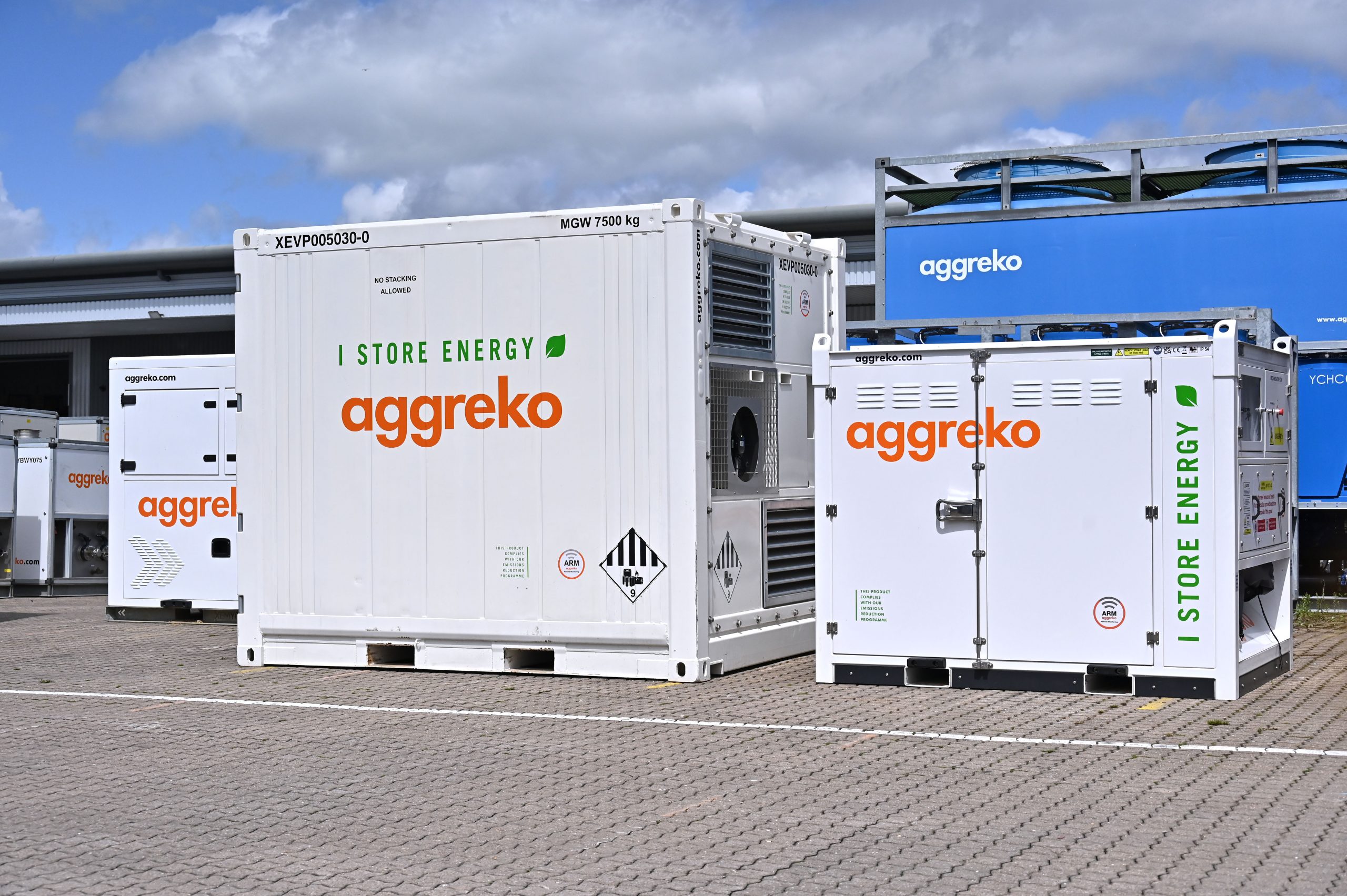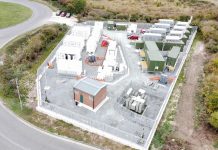Battery energy storage systems (BESS) are a valuable solution which can be applied to a wide range of critical power applications. Despite this, Rodrigo Salim, Head of Product Management at Aggreko says the benefits of BESS can be overlooked. As BESS become more important in the energy transition across energy-intensive sectors, Rodrigo addresses some of the more common misconceptions.
As heavy industry faces an array of energy challenges including the need to decarbonise, meet emission regulations and decrease fuel consumption on site, technology that could ease the strain has never been more sought after. However, despite being compounded by ever-tightening capex budgets, variable load concerns and scalability, keeping up with these ever-changing technologies can become an overwhelming hurdle.
While we often find energy professionals have varying levels of understanding of BESS and other energy solutions, any technology in its infancy is left to interpretation and therefore relies on expert knowledge to realise its full potential. A lack of awareness and some commonly held misconceptions in the industry means projects that may benefit from integrating BESS into a hybrid power system onsite, or as a standalone solution, are missing out.
Breaking down the misconceptions surrounding the use of BESS in temporary power projects can better help suitable projects integrate the technology and reap the potential rewards.
Misconception one: BESS can always fully replace diesel / gas generators in all temporary power scenarios
While BESS can significantly reduce the reliance on traditional generators, it may not fully replace them. This could be due to extended periods where power is required or where there are very high-power demands. BESS is very effective when used in conjunction with generators, optimising their operation by reducing fuel consumption and emissions while improving generator efficiency. This is especially useful for projects dealing with emissions or noise reduction constraints, such as those operating in urban areas where ULEZ zones may dictate emission levels.
Misconception two: BESS is only for long-term applications or static systems
BESS is often seen as only suitable for permanent or long-term installations. But this is not the case. BESS can be highly effective in temporary power setups, providing flexibility and scalability for short- to medium-term needs, such as on construction projects, onshore wind commissioning, events, emergency power, or manufacturing site shutdowns.
In some situations, BESS can replace standby generators for certain applications, particularly those with relatively short backup power requirements including where environmental considerations and reduced maintenance are important factors. However, for applications that require long-duration, high-capacity backup power, standby generators are still often a preferred choice.
Combining the two technologies provides a robust and resilient system for critical equipment as was the case for Keltbray, a construction engineering specialist. After experts from Aggreko rightsized several site generators which were running at less than 30% load, our sector expert then introduced Keltbray to BESS solutions. Utilised in 12 projects, spanning six different counties, integrated BESS technology accounted for at least 25% of Keltbray’s temporary power procurement – saving over 75,000 litres (£100,000) of fuel.
The locations and projects where BESS may be deployed are also varied. While use of the technology has been widespread in construction and events, there are many more energy-intensive sector applications where BESS can support including in manufacturing, shipping, data centres, and utilities.
Misconception three: BESS provides infinite power supply
The capacity of BESS is determined by the size and design of the battery system. Once the stored energy is depleted, it needs to be recharged, which requires either connection to a power source or integration with a generator.
As part of this, the load profile of a site or project needs to be fully understood. This includes understanding where power fluctuations occur, at what time of the day, and whether there is increased or reduced demand at certain hours such as during the day compared to at night.
By understanding the load profile, we can understand where BESS can add value, and the best possible generator and BESS combination. We also understand that flexibility is crucial when it comes to business which is why with temporary solutions can be adapted if your coverage requirements shift in the future.
Misconception four: BESS requires no maintenance and is easy to integrate
Generally, BESS requires less maintenance than traditional generators. But this does not make them maintenance-free.
BESS controls can also be highly complex which is why it is critical for operators to work closely with a reputable supplier that is knowledgeable in this technology and can provide support in designing and optimising the right solution, along with 24/7 service and support.
For example, Aggreko’s Remote Monitoring (ARM) provides proactive diagnostics for Aggreko equipment including BESS. This gives project managers access to 24/7 monitoring support as well as assistance, wherever they are. For high-energy projects characterised by the need for power security and reliance, this technology minimises the risk of critical failures by diagnosing and solving issues before they can affect operations.
Working with a knowledgeable partner also makes BESS integration much simpler. We do a thorough assessment of the project to find the right BESS or hybrid solution for the requirement and then monitor asset and system performance. Aggreko will provide a turnkey project before commissioning, installing, maintaining, and monitoring to make it easy for the customer.
Myth five: BESS is only suitable for integration with solar / renewables
BESS relies on power for charging which can come from the grid or renewable sources but we, like many others in the industry, are aware of the many challenges facing those stuck in the queue for a connection. So, for those sites with existing renewable technology, incorporating a BESS as part of a hybrid solution not only makes the most of previous investments but it also offers financial rewards by reducing the amount of renewable energy going to waste due to a lack of storage capacity.
Future sustainable growth also depends on sites remaining sustainable and making sure their operations can be scaled without increasing emissions. While utilising renewable energy and reducing reliance on the grid, BESS also enable intervals of reduced noise and emissions, substituting diesel to drive down operational carbon footprint.
When correctly integrated as a hybrid or temporary solution, BESS offer a feasible route for energy-intensive projects to move forward in the transition towards a greener future without dipping into the capex pot.
Misconception six: BESS solutions are always more expensive
The benefits of temporary and permanent BESS solutions, when used as part of a hybrid project, often outweigh the initial investment due to the savings in emissions, fuel expenditure and through effective load management.
BESS allow project managers to avoid dipping into tight CAPEX pots and when integrated as part of a hybrid solution, can return rewards that outweigh any upfront costs associated with bringing the technology onsite.
To reach that level of understanding, it is essential to have the knowledge of how generators and loads operate and react to each other, alongside the application the BESS is supporting, in order to fully optimise the operation of the system. This is something that does not come naturally and only experienced partners can provide.
Making the BESS(T) choice for your site
In summary, BESS use should be considered on a case-by-case basis and many misconceptions are holding back eligible sites that could reap the rewards of this powerful technology. This is why anyone operating in energy-intensive industries or built infrastructure should make a conscious effort to challenge misconceptions and bring awareness to the many benefits of BESS as a hybrid solution.
Aggreko has made global investments of around $200 million in mobile BESS as part of its sustainability framework, Energising Change, allowing more industries to access the latest in battery technology and reach net zero targets. The BESS fleet will enable more customers to decarbonise their power provision, add resilience, improve efficiency and overcome power capacity constraints in energy-intensive industries.
To find out if a BESS solution is right for your project, click HERE




